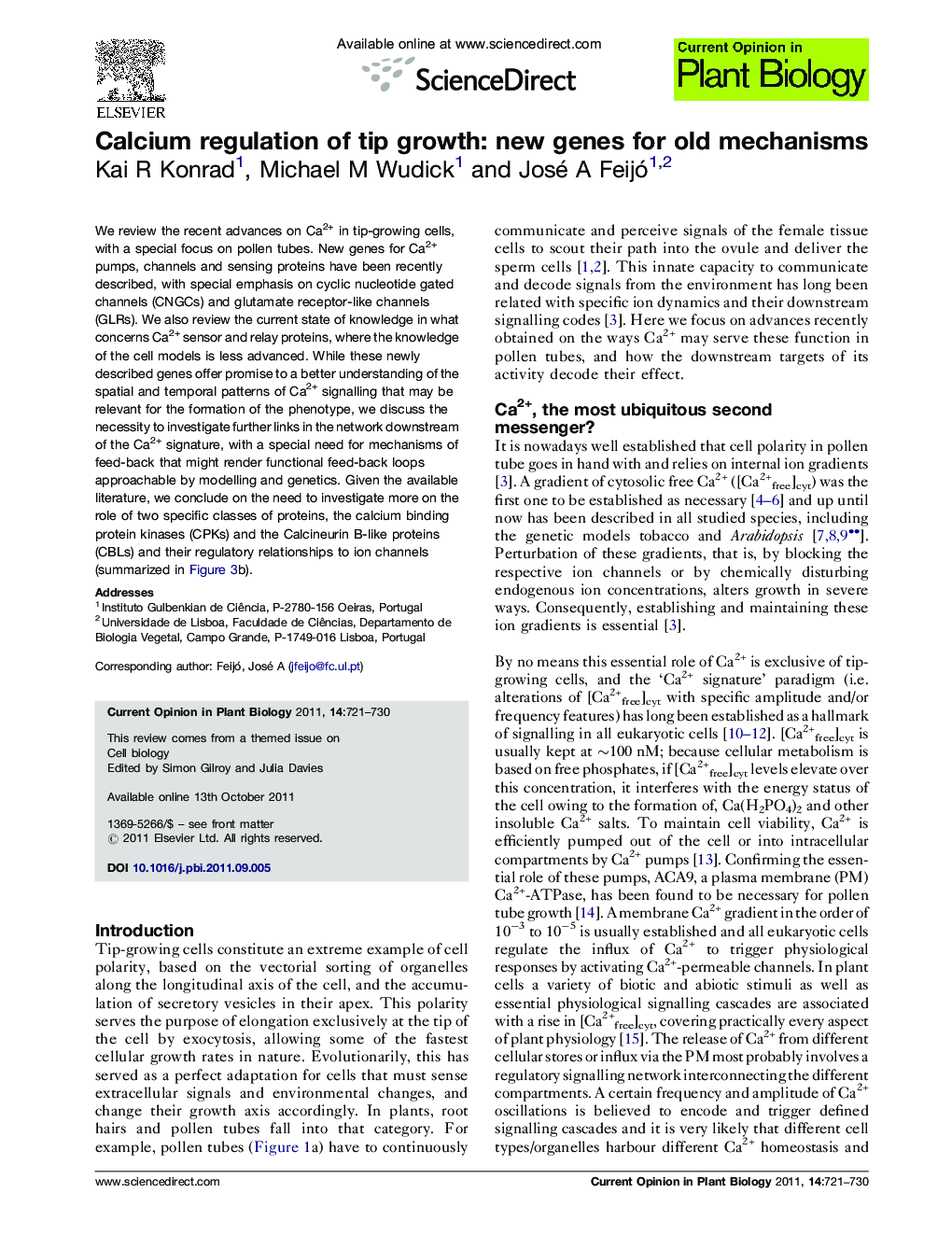| کد مقاله | کد نشریه | سال انتشار | مقاله انگلیسی | نسخه تمام متن |
|---|---|---|---|---|
| 2046210 | 1073763 | 2011 | 10 صفحه PDF | دانلود رایگان |

We review the recent advances on Ca2+ in tip-growing cells, with a special focus on pollen tubes. New genes for Ca2+ pumps, channels and sensing proteins have been recently described, with special emphasis on cyclic nucleotide gated channels (CNGCs) and glutamate receptor-like channels (GLRs). We also review the current state of knowledge in what concerns Ca2+ sensor and relay proteins, where the knowledge of the cell models is less advanced. While these newly described genes offer promise to a better understanding of the spatial and temporal patterns of Ca2+ signalling that may be relevant for the formation of the phenotype, we discuss the necessity to investigate further links in the network downstream of the Ca2+ signature, with a special need for mechanisms of feed-back that might render functional feed-back loops approachable by modelling and genetics. Given the available literature, we conclude on the need to investigate more on the role of two specific classes of proteins, the calcium binding protein kinases (CPKs) and the Calcineurin B-like proteins (CBLs) and their regulatory relationships to ion channels (summarized in Figure 3b).
► Tip-growing cells evolved as integrators of extracellular cues in the form of differential growth.
► The calcium ion (Ca2+) is one of the most important signalling transducers in these cells.
► In recent years the genetics behind the physiology of Ca2+ is finally being unveiled.
► Here we review the recent finding of genes that code for Ca2+ channels and specific transduction pathways.
► Coordination of growth and morphogenesis in these cells by Ca2+ is discussed.
Journal: Current Opinion in Plant Biology - Volume 14, Issue 6, December 2011, Pages 721–730